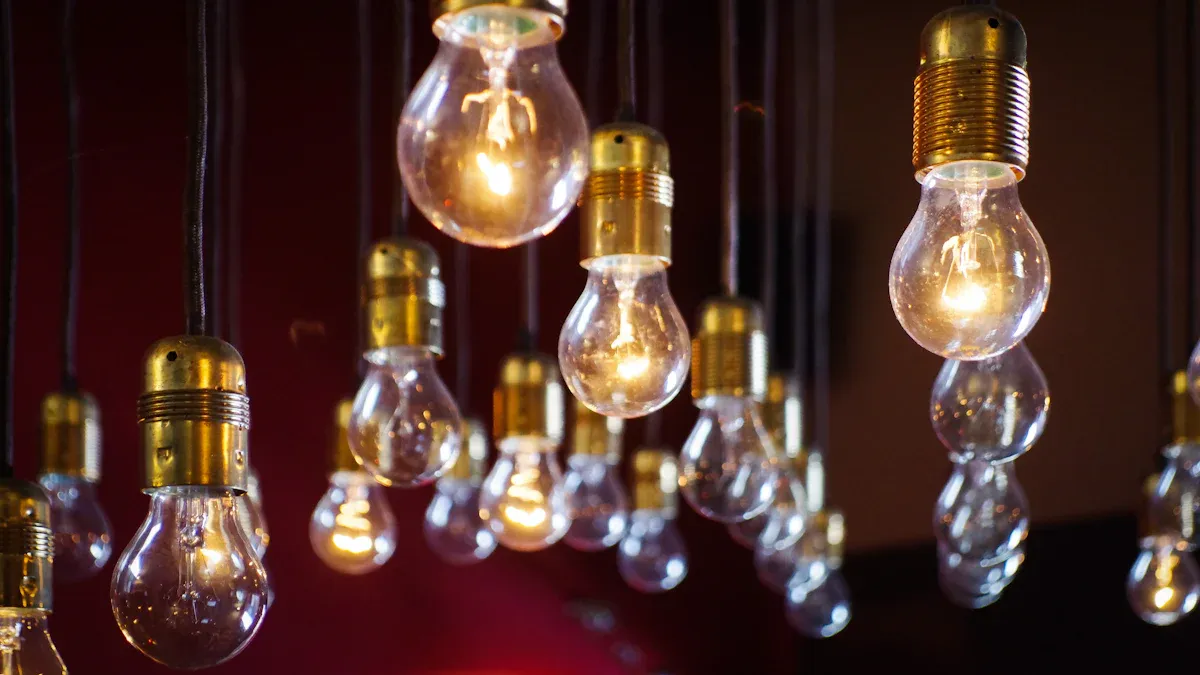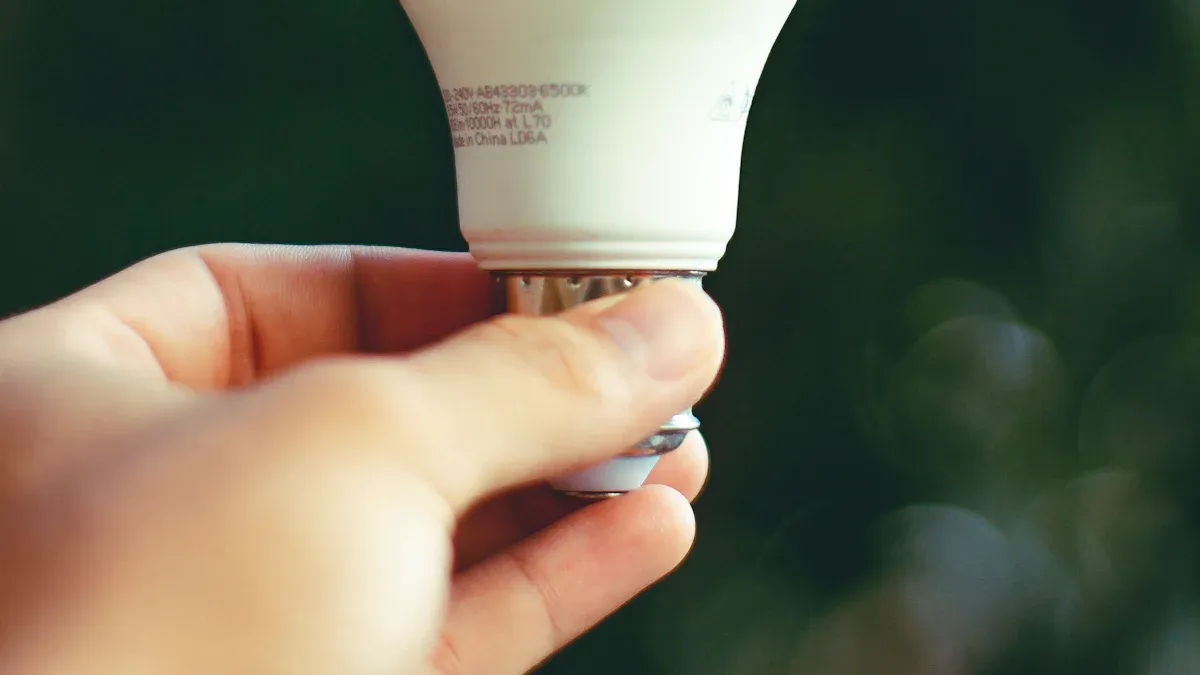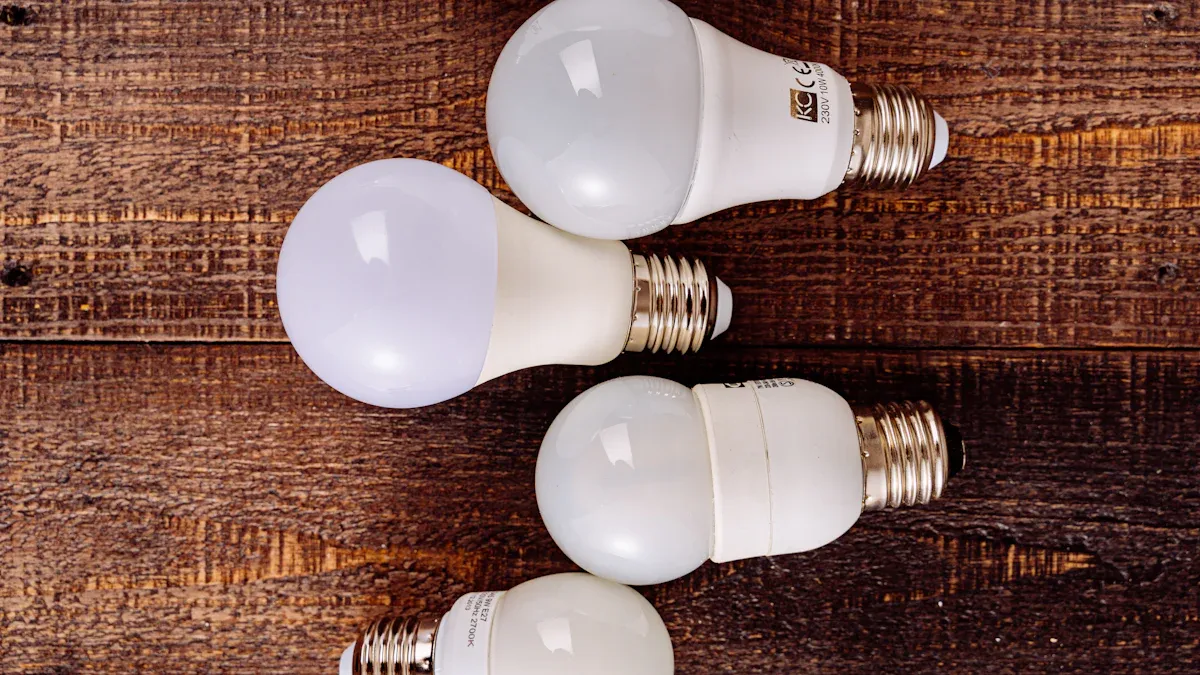
Smart purchasing decisions help organizations save on every light bulb order. Buyers who focus on the right led light bulb specifications reduce waste. Each LED Bulbs upgrade brings lower energy bills. A quality led bulb lasts longer and cuts replacement costs. Careful choices improve lighting and boost savings.
Key Takeaways
- Calculate your exact LED bulb needs by measuring space and lighting requirements to avoid overbuying and waste.
- Compare prices and suppliers carefully, looking for trusted companies that offer bulk discounts and clear support.
- Choose high-efficiency, long-lasting LED bulbs with the right brightness and color temperature to save energy and reduce maintenance costs.
Calculate Your Actual LED Bulbs Needs
Assess Space and Lighting Requirements for LED Bulbs
Every lighting project starts with a clear understanding of the space. Facility managers measure each room or area to determine how many fixtures they need. They consider the purpose of the space. For example, a warehouse needs brighter lighting than a hallway. Lighting professionals use a simple formula:
Total lumens needed = Area (in square feet) × Recommended foot-candles for the space.
A table can help organize this information:
| Area Type | Size (sq ft) | Foot-Candles Needed | Total Lumens Needed |
|---|---|---|---|
| Office | 500 | 30 | 15,000 |
| Warehouse | 1,000 | 50 | 50,000 |
| Hallway | 200 | 10 | 2,000 |
This approach ensures the right amount of light for each area.
Avoid Overbuying and Wastage of LED Bulbs
Overestimating needs leads to wasted money and unused inventory. Buyers should review their calculations before placing orders. They can create a checklist:
- Count all fixtures in each space.
- Check if any fixtures share bulbs.
- Consider future expansion, but avoid large surpluses.
Tip: Order a small buffer (about 5%) for replacements, but avoid excessive extras.
By matching orders to actual needs, organizations prevent waste and maximize savings on LED Bulbs.
Compare Bulk LED Bulbs Pricing and Suppliers

Research Reputable LED Bulbs Suppliers
Buyers should start by identifying trustworthy suppliers. Reliable companies provide consistent product quality and clear communication. They often display certifications and customer reviews on their websites. Checking these details helps buyers avoid unreliable sources. Many professionals recommend working with established manufacturers. For example, Ninghai County Yufei Plastic Electric Appliance Factory has built a strong reputation for delivering high-quality lighting products. This company offers detailed product information and responsive customer service. Buyers can contact their sales team to ask about product specifications and delivery times.
A simple checklist for evaluating suppliers includes:
- Confirm business licenses and certifications.
- Read recent customer feedback.
- Review warranty and return policies.
- Ask about after-sales support.
Tip: Choose suppliers who answer questions quickly and provide clear documentation.
Evaluate Bulk Discounts and Special Offers on LED Bulbs
Bulk orders often qualify for special pricing. Buyers should compare offers from several suppliers. Some companies provide tiered discounts based on order size. Others offer seasonal promotions or free shipping for large purchases. Creating a table can help organize price quotes:
| Supplier Name | Price per Bulb | Discount Level | Extra Offers |
|---|---|---|---|
| Ninghai County Yufei Plastic Electric Appliance Factory | $1.20 | 10% (1000+) | Free shipping |
| Supplier B | $1.25 | 8% (800+) | None |
| Supplier C | $1.18 | 5% (500+) | Extended warranty |
Buyers should read the fine print on all offers. They should also calculate the total cost, including shipping and taxes. Comparing these details ensures the best value for every LED Bulbs order.
Prioritize Energy Efficiency and Lifespan in LED Bulbs

Choose High-Efficiency LED Bulbs for Long-Term Savings
High-efficiency lighting reduces energy bills and supports sustainability goals. Facility managers select bulbs with high lumens per watt. This rating shows how much light a bulb produces for each unit of energy. A higher number means better efficiency. For example, a bulb with 120 lumens per watt uses less electricity than one with 80 lumens per watt. Over time, this difference lowers operating costs.
A quick comparison table helps buyers see the benefits:
| Bulb Type | Lumens per Watt | Estimated Annual Energy Cost (per bulb) |
|---|---|---|
| Standard LED | 80 | $2.00 |
| High-Efficiency LED | 120 | $1.30 |
Note: Choosing high-efficiency bulbs leads to significant savings, especially in large facilities.
Consider Total Cost of Ownership for LED Bulbs
Smart buyers look beyond the sticker price. They calculate the total cost of ownership, which includes purchase price, energy use, and replacement frequency. Longer-lasting bulbs reduce maintenance and labor costs. For example, a bulb rated for 50,000 hours will need fewer replacements than one rated for 15,000 hours.
Key factors to consider:
- Initial purchase price
- Energy consumption over time
- Expected lifespan
- Maintenance and replacement costs
Tip: Investing in quality bulbs with longer lifespans saves money in the long run.
LED Bulbs with high efficiency and long life offer the best value for bulk purchases.
Select the Right LED Bulbs Specifications
Understand Lumens and Wattage in LED Bulbs
Selecting the right brightness starts with understanding lumens and wattage. Lumens measure the amount of light a bulb produces. Higher lumens mean a brighter bulb. Wattage shows how much energy the bulb uses. In the past, people chose bulbs by wattage. Today, they should focus on lumens for better results.
A quick reference table helps buyers compare options:
| Bulb Type | Lumens | Wattage |
|---|---|---|
| A | 800 | 8 |
| B | 1100 | 10 |
| C | 1600 | 14 |
Facility managers check the lumens needed for each space. They select bulbs that match those needs. This approach ensures the right amount of light and avoids wasted energy.
Tip: Always read the packaging to find both lumens and wattage before making a purchase.
Match Color Temperature and Compatibility of LED Bulbs
Color temperature affects the mood and function of a space. It appears as a number followed by “K” (Kelvin). Lower numbers, like 2700K, give a warm, yellow light. Higher numbers, such as 5000K, create a cool, white light. Offices often use 4000K for a balanced look. Warehouses may need 5000K for clear visibility.
Buyers also check compatibility. They make sure the LED Bulbs fit the fixtures and work with existing dimmers or controls. Some bulbs do not support dimming. Others may not fit certain sockets.
A simple checklist helps:
- Confirm the required color temperature for each area.
- Check bulb base type and size.
- Verify dimmer or control compatibility.
Choosing the right specifications ensures the lighting system works well and meets all needs.
Factor in Installation and Maintenance for LED Bulbs
Plan for Easy Installation of LED Bulbs
Facility managers often look for lighting solutions that simplify installation. They select bulbs with standard bases and clear instructions. This choice reduces the need for specialized tools or training. Many professionals recommend checking fixture compatibility before purchase. They also suggest grouping installations by area to save time.
A simple checklist can help teams prepare for installation:
- Verify socket type and voltage.
- Gather necessary tools.
- Schedule installation during low-traffic hours.
- Assign tasks to trained staff.
Tip: Clear labeling of replacement bulbs and fixtures prevents confusion during future upgrades.
Easy installation leads to faster project completion and fewer disruptions in daily operations.
Minimize Future Maintenance Costs with LED Bulbs
Long-term savings depend on reducing maintenance needs. Facility teams choose bulbs with long lifespans and strong warranties. They track installation dates and expected replacement cycles. This practice helps them plan maintenance schedules and avoid unexpected outages.
A maintenance log might include:
| Location | Bulb Type | Install Date | Expected Replacement |
|---|---|---|---|
| Main Office | Type A | 01/2024 | 01/2030 |
| Warehouse | Type B | 02/2024 | 02/2032 |
Note: Regular inspections help spot issues early and extend the life of lighting systems.
By planning for easy installation and tracking maintenance, organizations keep costs low and lighting reliable.
Applying these five cost-saving tips helps organizations secure the best value and avoid hidden costs. Careful planning, supplier comparison, and selecting the right products lead to efficient, cost-effective lighting.
- Maximize long-term savings
- Achieve reliable lighting for any space
By: Grace
Tel: +8613906602845
E-mail: grace@yunshengnb.com
Youtube: Yunsheng
TikTok: Yunsheng
Facebook: Yunsheng
Post time: Jul-04-2025
